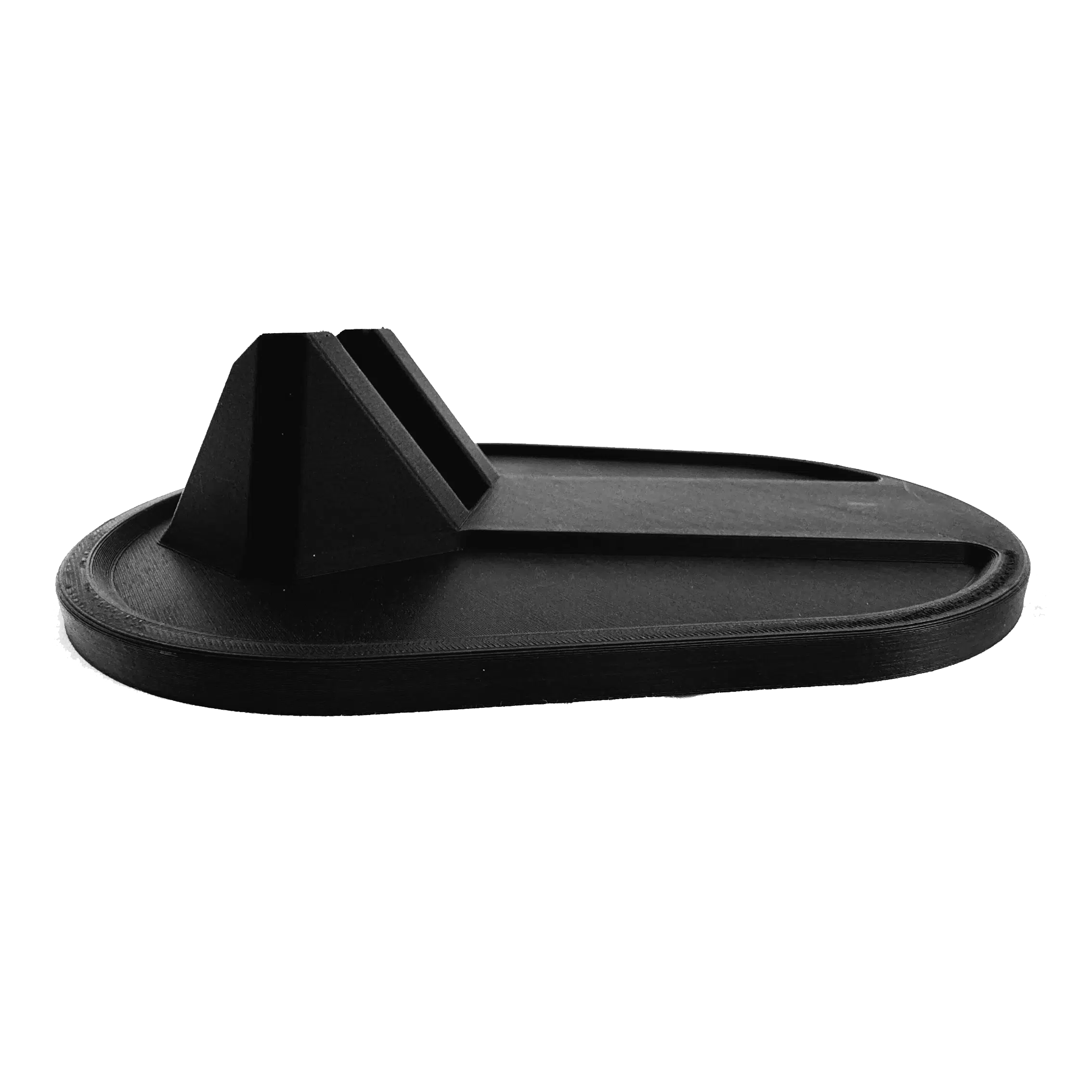
Categories:
The AK-47, a renowned and widely used assault rifle, is lauded for its durability and reliability under harsh conditions. The firing mechanism of the AK-47 is a fundamental aspect contributing to its iconic status and effectiveness in various combat scenarios. At the heart of this process is the interaction between the firing pin and the primer of the cartridge, which ultimately results in the discharge of the weapon.
The AK-47 operates on a gas-operated, rotating bolt system, allowing it to fire both semi-automatically and fully automatically. When the trigger is pulled, it initiates a series of actions within the rifle’s internal components. The hammer, which is under tension from the hammer spring, is released and strikes the firing pin with considerable force. The firing pin, a slender, cylindrical metal rod housed within the bolt, then moves forward swiftly.
At this critical moment, the firing pin impacts the primer located at the rear of the cartridge. The primer is a small, sensitive component filled with a chemical compound that ignites upon receiving the mechanical shock from the firing pin. This ignition creates a small but intense flash of flame that travels through the flash hole into the main body of the cartridge, where it ignites the propellant powder.
The rapid combustion of the propellant generates a high-pressure gas, which exerts an immense force on the base of the bullet seated in the cartridge. This force propels the bullet out of the cartridge case and down the barrel at high velocity. As the bullet travels through the rifled barrel, it gains stabilization from the induced spin, enhancing its accuracy and range.
Simultaneously, the expanding gas is vented through a gas port located near the front sight of the barrel into the gas tube above the barrel. The gas pushes the gas piston attached to the bolt carrier rearward. As the bolt carrier moves back, it extracts and ejects the spent cartridge case and compresses the recoil spring. Once fully retracted, the spring drives the bolt assembly forward again, chambering a new round from the magazine and preparing the rifle for the next shot.
The AK-47 cartridge, a key component in the operation of this iconic assault rifle, encapsulates a fusion of engineering, chemistry, and ballistics designed for maximum reliability and lethality. A typical AK-47 cartridge comprises several main elements, each playing a crucial role in the firing process: the casing, the primer, the propellant, and the bullet. The casing, often constructed from brass or steel, is the outer vessel that holds the other components together.
It is cylindrical, tapering slightly towards the base, where it is rimmed to fit snugly within the AK-47’s chamber. The casing not only houses the primer and propellant but also provides the necessary structure to withstand the high pressures generated during firing. When the firing pin strikes, the integrity of the casing ensures that the expanding gases propel the bullet forward rather than dispersing energy in less controlled ways.
At the base of the casing lies the primer, a small but vital component. The primer is typically a cup containing a sensitive explosive compound. This compound is designed to ignite upon the impact of the firing pin, creating a small, intense explosion. This explosion is the catalyst that ignites the propellant contained within the cartridge. The propellant, often referred to as gunpowder, fills the space between the primer and the bullet.
Modern cartridges make use of smokeless powder as a propellant, providing a consistent and powerful combustion event that generates the necessary gas pressure to propel the bullet. When ignited, this propellant rapidly transitions from solid to gas, expanding to create the high-pressure environment needed to force the bullet from the casing and down the rifle barrel. Finally, the bullet is the business end of the cartridge.
Constructed typically from a lead core encased in a copper or steel jacket, the bullet is designed to withstand the intense pressures and velocities involved in firing. Upon ignition of the propellant, the bullet is driven forward through the barrel, spiraling as it travels due to the rifling inside the barrel. This spin ensures stability and accuracy in flight, increasing the likelihood of hitting the intended target.
The role of the firing pin in the AK-47 is a critical aspect of its firing mechanism, directly influencing the gun’s ability to discharge a cartridge effectively. An integral part of its overall design, the firing pin ensures the successful ignition of the round, initiating the sequence that propels a bullet from the barrel. Although the entire firing mechanism comprises several interconnected components, the firing pin itself occupies a definitive role.
When the trigger is pulled on an AK-47, the hammer is released from its cocked position. This hammer springs forward under tension, striking the rear of the bolt carrier. The energy transfer from the hammer to the firing pin occurs at this moment. The firing pin, situated within the bolt, then moves forward rapidly. This forward motion is pivotal because the firing pin must deliver sufficient force to strike the primer located at the base of the cartridge casing.
The primer is a small, sensitive cap containing a chemical compound that ignites upon impact. When the firing pin makes contact with the primer, the sharp impact induces an explosive reaction in this chemical compound. The resultant flame from this minor explosion quickly travels through a flash hole into the cartridge’s main body, igniting the gunpowder or other propellant contained within the cartridge.
The rapid combustion of the propellant generates a large volume of high-pressure gas. This gas, confined within the barrel, exerts force on the bullet placed at the front of the cartridge, propelling it down the barrel and out of the gun at high velocity.
In this intricate process, the firing pin’s reliability and precision are of utmost necessity. A defective or worn-out firing pin may fail to produce the necessary impact on the primer, leading to a misfire—a scenario where the cartridge does not discharge as intended. Therefore, regular maintenance and inspection of the firing pin are crucial for ensuring the consistent and reliable operation of the AK-47.
The straightforward yet effective design of the firing pin in the AK-47 exemplifies the emphasis on durability and simplicity that is central to the gun’s enduring reputation.
When discussing how the primer ignites in a cartridge, one must delve into the fundamental mechanics of gun operation, particularly focusing on the interaction between the firing pin, primer, and the explosive chain reaction that follows. In the context of the AK-47, which is a widely recognized and utilized automatic rifle, this process is both intricate and rapid. Upon pulling the trigger of an AK-47, a sequence of events is set into motion, beginning with the release of the hammer.
The hammer strikes the firing pin with considerable force, propelling it forward toward the base of the cartridge. The firing pin’s tip then makes contact with the primer, a small ignition-sensitive component embedded in the base of the cartridge. This contact is critical; the firing pin must strike the primer with sufficient force to activate its inherent explosive material. Primers are typically made from a soft metal cup containing a sensitive chemical compound, often a mixture of lead styphnate, barium nitrate, and antimony sulfide.
These chemicals are chosen for their sensitivity to impact and their rapid combustion properties. Upon impact by the firing pin, the primer undergoes a process known as percussion ignition. The force from the firing pin’s strike creates a pressure wave that instantly compresses the primer’s explosive mixture. In response to this sudden pressure, the chemical compound within the primer detonates, producing a small but intense burst of flame and hot gas.
This initial ignition by the primer is precisely controlled and serves as the catalyst for the next stage: igniting the main propellant charge within the cartridge. The hot gases and flame generated by the detonated primer force their way through a small flash hole into the cartridge case, igniting the gunpowder or other propellant contained inside. The rapidly expanding gases from the burning propellant generate immense pressure within the cartridge case, which then forces the bullet to travel down the barrel and exit the gun at high velocity.
Thus, the primer’s role is both crucial and indispensable within the overall function of the gun.
When the firing pin of an AK-47 strikes the primer of a cartridge, it sets off a delicate and rapid chain reaction that ultimately propels a bullet down the barrel and towards its target. This ignition sequence is a marvel of engineering and chemistry, turning mechanical energy into kinetic force through a controlled explosion. The firing pin’s impact on the primer is the initial spark in this sequence.
The primer, located at the base of the cartridge, contains a small amount of a sensitive explosive compound. Upon receiving the sharp blow from the firing pin, the primer compound rapidly decomposes and releases a burst of hot gases and incandescent particles. These high-energy emissions are sufficient to ignite the main propellant charge housed within the cartridge case. The primary propellant in an AK-47 round is typically a type of smokeless powder.
Unlike traditional black powder, smokeless powder burns more efficiently and releases significantly more energy per unit of mass. The hot gases and particles from the primer ignite the smokeless powder, and the combustion process moves swiftly through the granules of propellant. This burning process is technically a deflagration, a type of combustion that spreads subsonically through the gas or along the surface of the explosive material.
As the smokeless powder burns, it transforms from a solid to a hot, rapidly expanding gas. The pressure inside the cartridge case increases exponentially, constrained by the metal walls of the cartridge and the barrel of the gun. This pressure forces the bullet, which had been seated securely into the neck of the cartridge case, to break free and accelerate down the barrel.
The rapid transition of energy from chemical to kinetic is a critical aspect of guns engineering, designed to maximize the bullet’s velocity while maintaining the integrity of the weapon and safety for the shooter. This carefully controlled internal explosion is directed solely along the path of least resistance – down the barrel – imparting immense speed and power to the bullet.
The rifling inside the barrel imparts a stabilizing spin to the projectile, ensuring accuracy over distance. The entire sequence, from the firing pin’s strike to the bullet exiting the barrel, is completed in milliseconds yet represents a finely-tuned harmony of design and physics.
When the AK-47’s firing pin strikes the primer of the cartridge, a series of intricate mechanical events follow which ultimately leads to the ejection of the spent cartridge casing. As the firing pin hits the primer, it ignites the propellant within the cartridge, generating a rapid expansion of gases. This creates immense pressure within the cartridge, propelling the bullet through the barrel and out of the muzzle at high speed.
Simultaneously, this buildup of pressure also begins the ejection process.
As the bullet exits the barrel, the expanding gases exert force on the bolt carrier group. In the AK-47, the weapon’s gas-operated mechanism diverts some of these gases through a small hole, known as the gas port, located near the front of the barrel. The diverted gases travel into a cylinder where they push against a piston affixed to the bolt carrier.
The force transmitted by the gas piston pushes the bolt carrier and bolt rearward. This rearward motion is crucial for the ejection sequence.
As the bolt carrier travels backward, the bolt itself rotates and unlocks from the chamber. Once unlocked, the bolt carries the spent cartridge casing with it, extracting it from the chamber. A small extractor hook on the bolt grips the rim of the spent cartridge, ensuring it moves in unison with the bolt.
As the spent cartridge casing is withdrawn from the chamber, it encounters a fixed ejector within the rifle’s receiver. This ejector is typically a small protrusion placed strategically such that when the casing strikes it, the casing is flipped out of the ejection port. The precise timing and alignment of these components ensure that the spent cartridge is effectively ejected, making room for a new cartridge to be loaded into the chamber.
The entire cycle happens in fractions of a second, allowing the AK-47 to fire rapidly and reliably. The combination of gas operation, bolt carrier motion, and mechanical extraction and ejection ensures that the rifle functions smoothly, maintaining its reputation for durability and efficiency in a variety of combat environments.
The firing pin system of an AK-47 is a crucial component that ensures reliable ignition of the cartridge when the trigger is pulled. However, this system must be safeguarded by robust safety mechanisms and regular maintenance to prevent unintentional discharges and ensure the gun operates efficiently. The AK-47 is equipped with several intrinsic safety features that work to control the actions of the firing pin and prevent mishaps.
One of the primary safety mechanisms is the trigger safety that blocks the trigger from being pulled unless the safety lever is disengaged. Additionally, the bolt carrier group is designed to ensure that the firing pin only strikes the primer when the bolt is fully locked into the chamber, preventing out-of-battery discharges. Proper maintenance of the firing pin system is essential to maintaining the overall reliability and safety of the AK-47.
Regular cleaning is necessary to remove carbon buildup and debris that can hinder the firing pin’s movement. Disassembling the bolt and carefully cleaning the firing pin channel with solvent and brushes prevents potential malfunctions. It’s important to inspect the firing pin for any signs of wear or damage, such as bending or tip deformation, as these issues can compromise its functionality.
Lubrication is another critical aspect of maintaining the firing pin system. Using high-quality lubricants sparingly ensures smooth operation without attracting excessive fouling or debris. Over-lubrication can lead to dirt and grime accumulation, thereby obstructing the movement of the firing pin and causing misfires or hang fires. Replacing weakened or damaged firing pin springs is also vital. Weak springs may not impart sufficient force to reliably ignite primers, leading to inconsistent firing.
Regular inspection and timely replacement of these components ensure optimal performance. In summary, the safety mechanisms such as the trigger safety and bolt carrier design paired with diligent maintenance practices like cleaning, lubrication, and component inspection are indispensable in ensuring the effective functioning of the AK-47’s firing pin system. Maintaining these elements enhances the rifle’s reliability and safety, providing a trustworthy gun.








Colt
Colt M4 Carbine
Colt LE6920
Colt AR-15 A4
Daniel Defense
DDM4 V7
DDM4 V9
DDM4 V11
DDM4 ISR (Integrally Suppressed Rifle)
Smith & Wesson (S&W)
M&P15 Sport II
M&P15 Tactical
M&P15T
Bravo Company Manufacturing (BCM)
BCM Recce-16
BCM Recce-14
BCM MCMR Series
Aero Precision
M4E1 Series
AC-15
AR15 Pistol (Various Configurations)
Ruger
Ruger AR-556
Ruger SR-556
Ruger AR-556 MPR (Multi-Purpose Rifle)
Springfield Armory
Saint Victor
Saint Edge
Saint AR-15
PSA (Palmetto State Armory)
PSA PA-15
PSA AR-V
PSA Jakl (AR Pistol)
FN America
FN 15 Tactical Carbine
FN 15 Patrol
FN 15 DMR
Wilson Combat
Recon Tactical
Super Sniper
Protector Carbine
SIG Sauer
SIG M400 Tread
SIG M400 Elite
SIG M400 SDI
LWRC International
IC DI (Direct Impingement)
IC SPR
IC A5
Bushmaster Guns
XM-15 QRC
Bushmaster MOE
XM-15 Patrolman
Rock River Arms
LAR-15 Entry Tactical
LAR-15 Predator
LAR-15 Elite Comp
Stag Arms
Stag 15 Tactical
Stag 15L (Left-Handed Models)
Stag 15 Valkyrie
Noveske Rifleworks
Noveske Gen 4 N4
Noveske Space Invader (AR Pistol)
Noveske Recon
Anderson Manufacturing
AM-15 Optic Ready
AM-15 M4 Carbine
AM-15 Precision Rifle
Adams Arms
AA-15 Piston Rifle
P2 AARS (Adams Arms Rifle Series)
Black Rain Ordnance
SPEC15 Series
BRO Predator
Fallout 15
Diamondback Guns
DB15 Series
DB15CCMLB
DB15EB
Del-Ton Inc.
DTI-15
Del-Ton Echo 316H
Sierra 316M
Windham Weaponry
Windham SRC
Windham VEX-SS
Windham RMCS-4 (Caliber Conversion System)
Christensen Arms
CA-15 G2
CA-15 Recon
CA-15 Titanium Edition
Patriot Ordnance Factory (POF-USA)
Renegade Plus
P415 Edge
Revolution DI
LaRue Tactical
PredatAR
OBR (Optimized Battle Rifle)
LaRue Stealth 2.0
Battle Arms Development
Workhorse Patrol Carbine
BAD556-LW (Lightweight)
Authority Elite Rifle
Faxon Guns
Ascent AR-15
FX-19 (AR Pistol)
Streamline Ultralight Series
KE Arms
KE-15 SLT (Super Lightweight Tactical)
KE-15 Scout Carbine
Primary Weapons Systems (PWS)
MK1 MOD 2-M
MK116 PRO
MK107 (Piston AR Pistol)
ZEV Technologies
ZEV Core Elite Rifle
ZEV AR15 Billet Rifles
Franklin Armory
BFSIII AR-C1
Militia Model
F17-L (Chambered in .17 WSM)
Seekins Precision
SP15 DMR
NX15 Skeletonized Rifle
Havak Bravo
Aero Precision (Additional Models)
EPC-9 (Pistol Caliber ARs)
VG6 AR Rifles
Barrett Guns
REC7 DI
REC7 Gen II
CMMG
MK4 RCE
Resolute 300
Banshee (AR Pistol)
DPMS Panther Arms
Panther Oracle
Panther LR-308
H&K (Heckler & Koch)
HK MR556A1
HK416 (Military Variant)
Rock Island Armory (Armscor)
VR-80 Tactical AR (Shotgun AR Platform)
Troy Industries
Troy SPC-A3
Troy PAR (Pump Action AR)
Wilson Tactical
Tactical Recon AR
Protector Series
F1 Guns
FDR-15 Skeletonized Rifle
BDRx-15 Series
Juggernaut Tactical
JT-15
JT-10 Precision Rifle
AeroSurplus
Surplus AR-15 Rifles (Budget Models)
Thunder Tactical
AR-15 Basic Carbine
Tactical Builder Sets
Radical Guns
RF-15
Forged AR-Series
Dark Storm Industries
DS-15 Featureless Rifles
DS-10 Typhoon
DRD Tactical
Paratus
Aptus AR Rifles
Bear Creek Arsenal
BCA-15
AR Complete Upper Builds
Aero Survival Rifles (ASI)
ASR Tactical Series
Tactical Edge
WARFIGHTER Series
AR-15 Lightweight Rifles
Lone Star Armory
TX15 DMR
TX15 Carbine
HERA Arms
HERA H7
HERA AR-15 Lower Builds
IWI (Israeli Weapon Industries)
Zion-15
DRD Tactical
Tactical Modular Rifles
Quick-Takedown Rifles
V Seven Weapons
1776 Rifle
Hyperlite Rifle
Core Rifle Systems
Core15 Tac III
Core15 Patrol Rifle
Armalite (Original AR-15 Creator)
M15 Tactical
M15 A4 Carbine
DEF15 (Defensive Sporting Rifle Series)
PSA (Palmetto State Armory Additional Models)
PSAK-47 Hybrid (AR-AK Style Hybrid)
PSA Dagger (Pistol Caliber Configurations)
Odin Works
OTR-15
Odin Recon Rifle
Maxim Defense
MDX-508 PDX (Compact AR Pistol)
MDX-510 Rifle